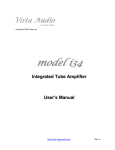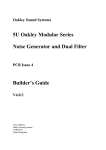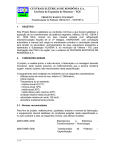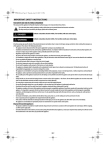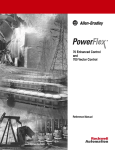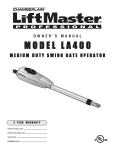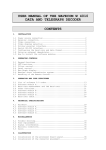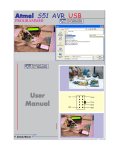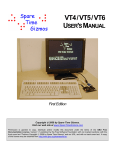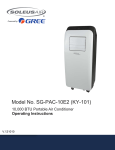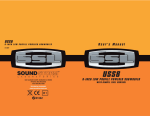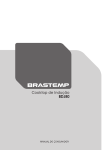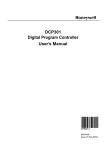Download Pump House Manual - Blue Jay Cabin.com
Transcript
Dogwood - Blue Jay Water Blending Control System User Manual The Dogwood - Blue Jay water system is relatively simple to operate. There are two primary sources of water: four horizontal wells and one vertical well. All wells are located on association property. The three maybe four horizontal wells enter the pump house on two separate lines. Two of these wells are connected before entering the pump house and the third well runs from the source directly into the pump house. The mixing system was designed to blend the vertical well water with the horizontal well water. The ‘new’ vertical well contained containments above California acceptable levels. Blending the wells brings these levels well within the California state water standards. The system has been designed to allow the operator to set the bending ratio to meet both current and – should they change – future standards. 1 The ‘control box’ for water blending is located in the pump house on the same wall as all the other electrical panels. The box is divided into three user options: Water blending – Water blending and test and Vertical only WATER BLENDING COLUMN Push to set horizontal level button: This allows the operator to set the desired blend. Each time the button is pushed, one of the green LED lights will turn on indicating the ratio at which the water is blending. NOTE: THE RATIO REPRESENTS THE PERCENTAGE OF HORIZONTALWELL WATER TO VERTICAL WELL WATER. FOR EXAMPLE 4/5 EQUALS 4 PARTS HORIZONTAL WATER FOR 1 PART VERTICAL WELL WATER; There are 4 blending options: 4/5- 3/5 -2/5 and 1/5. The Horizontal Well Water fills first. Push to start blending water button: After setting the required ratio above, pushing this button starts the blending process. Operator has only four seconds after setting the blending ratio to start the blending process. After four seconds, the system defaults and you must start over. Once the blending process begins, it will continue until the blending tank is filled. When this process is complete, the system will automatically send the water to the upper tanks – as needed. Push to stop blending process button: This button is only pushed to stop the blending process. Its purpose would be to change the blending ratio in the event the wrong mix was incorrectly entered or to return to default mode whereby the system will automatically return to using water from the horizontal wells only (further explanation of this button function is found in the trouble shooting portion of the manual---see page ). 2 BLEND AND HOLD TEST COLUMN This blending option is used to fill the blending tank but hold the mixture for testing. This will allow the operator to mix the water and then take a sample and have it tested prior to sending the water up to the upper tanks. This option is normally used to complete any mandatory testing required by the San Bernardino public health department to ensure that the mixing process is functioning correctly. To complete this process: Push to set horizontal level button: This first step is the same as the first step taken in the water blending process outlined above: This allows the operator to set the desired blend. Each time the button is pushed, one of the green LED lights will turn on indicating the ratio at which the water is blending. NOTE: THE RATIO REPRESENTS THE PERCENTAGE OF HORIZONTALWELL WATER TO VERTICAL WELL WATER. FOR EXAMPLE 4/5 EQUALS 4 PARTS HORIZONTAL WATER FOR 1 PART VERTICAL WELL WATER; There are 4 blending options: 4/5- 3/5 -2/5 and 1/5. The Horizontal Well Water fills first. Push to start blending water button: (above red LED) after setting the required ratio above, pushing this button starts the blending process. Operator has only four seconds after setting the blending ratio to start the blending process. After four seconds, the system defaults and you must start over. The water will fill the mix tank with the blend you choose. When the tank is full the red LED will start blinking and the mix is ready and waiting to be tested. After the water is tested, either drain the tank with the Ball Valve located at the bottom of the mix tank (in the event the mix is incorrect or contaminated) or once again push to start blending water button above the red LED. This will send the mixture to Tank 1. In this case, the controller will continue to blend the water and send it to the upper tank until the red push to stop blending process button is pressed. By pushing this button, the system will default back to using horizontal water only. If it is determined that the tank needs to be drained, after the Ball Valve is opened and the tank empties, controller will automatically go to default mode. This re-sets the system back to using horizontal water only (further explanation of this button function is found in the trouble shooting portion of the manual---see page). Second Float over ride This button overrides a function that is in the normal blending mode. After setting the required ratio above, pushing this button starts the blending process. The difference between this mode and the normal blending mode is in this mode the system will continue blending even if the water level in Tank 1 drops below the second float. In the normal blending mode if the water inTank 1 drops below the second float the system default to Horizontal fill mode until the tank is full then it goes back into the mix mode. (This is still in the code but disabled)VERTICAL ONLY button is now used for Low Water Override The vertical only option will take water only from the vertical well. No water from the horizontal wells will be sent to the upper tank. This process should only be used in the event that the tests for containments (i.e. Gross Alpha) meet all safe water standards as required by all county, state and federal public health agencies. If elected, the vertical only process will continue until the red push to stop vertical only button is pushed. By pushing this button, the system will automatically default back to horizontal water only and continue to send horizontal water to the upper tank. 3 Trouble Shooting Notes IF YOU ARE TRYING TO START THE BLENDING PROCESS AND THE SYSTEM STAYS IN MODE 1 (DEFAULT MODE). The upper tank water may be below the second float. The water must be above the second float or the system will go to default mode until the water is above the first (top) float. Check second float #8 relay; if LED is on you will have to wait. If the green LED in the lower right corner is blinking the microcontroller in the control box is running correctly. When the controller is first powered up or repowered up in the middle of a mix process, it looks at the bottom float position in the mix tank. If water is above this position the Red LED on the controller will start blinking. This gives you the option to empty the tank using the valve at the bottom of the mix tank or pressing the Start Blending Button above the Red LED to send the water to Tank 1. If you want to override the controller, press the Stop Button several times, this will put the controller in the default mode and allow you to set a new mix mode using the existing water in the mix tank. The controller will assume the existing water in the mix tank is Horizontal Well Water. During the normal blending process if the water in Tank 1 drops below the second float, the controller will go to Mode 1 (default) and fill Tank 1 with Horizontal Well Water until the water is above the first (top) float. The controller will turn the #9 relay on which will allow both lift pumps to run to speed up the process. When the water reaches the top float the controller will resume blending the water in the mix tank. The 12V alarm lights will come on if one of the electric valves takes more than 15 seconds to go from one position to the other. The only way to reset the alarm lights in this case is to press one of the Red Stop Buttons. You will need to look at the manual status arrows on the front of the electric valves to see if they are in the right positions. Make a note of the valve positions before pressing the Red Stop Button. This may help when trouble shooting the problem. After pressing the Red Stop Button, the valves should go to Mode1 (valveC=close valveB=close valveA=open) If the top float in the mix tank is tripped, (mix tank is too full) the 12V alarm lights on the outside of the building will go on and the system will default to Mode 1. This may mean a valve that feeds the mix tank or the water sensor inside the mix tank may not be working properly. Make a note of the valve positions before resetting the controller. To reset the controller, turn the power off and on with the switch on the left side of the controller box. You will need to drain water from the mix tank in order to control the pumps and valves with the controller. The top mechanical float in the mix tank removes 12V supply to the relay coils that operate the valves, the pumps and relay #4 that turned on the 12V alarm lights. This relay is held on by the float and the main controller. When 4 power is removed from the relay coil, the alarm lights will go on. If a valve is stuck, you may need to shut off one of the manual ball valves to stop the water flow into the mix tank. Note the relay coils do not need the 12V provided by the top mix tank float to go to Mode 1, (default) but the valves do need 12V to go to default mode. Check relay # 1, 2 and 3 for no LED (relay off) and 12V on N/C contacts to valves. When the controller or relays # 1, 2, 3 and 5 loses 12V power, the system will default to Mode 1 (Horizontal well only). The switch on the left side of the controller box will put the system in Mode 1, if switched in the off position. (Green LED in lower right corner will stop blinking) Mode 1 = Homes supplied with horizontal wells only. Mode 2 = Fill 5000 Gal mix tank with horizontal water. Mode 3 = Fill 5000 Gal mix tank with vertical water. Mode 4 = Homes supplied from 5000 Gal mix tank with blended water. Mode 5 = Water is above bottom float; wait until mix tank is emptied. Mode 6 = Homes supplied with vertical water only. Mode1 = valveC=close valveB=close valveA=open Mode 2 = valveC=open valveB=close valveA=open Mode 3 = valveC=open valveB=open valveA=close Mode 4 = valveC=close valveB=close valveA=close Mode 6 = valveC=close valveB=open valveA=close Mode1 = Relays 1,2,3,5 and 6 are off – Relay 4 is on – Relay 7,8 and 9 don’t care Mode 2 = Relays 1,2 and 6 are off – Relays 3,4 and 5 are on – Relay 7,8 and 9 don’t care Mode 3 = Relay 6 is off – Relays 1,2,3,4 and 5 are on – Relay 7,8 and 9 don’t care Mode 4 = Relays 2,3 and 5 are off – Relays 1, and 4 are on – Relay 7,8 and 9 don’t care Relay 6 may or may not be on in Mode 4. If upper tank needs water relay is on. Mode 6 = Relays 3,5 and 6 are off – Relays 1,2, and 4 are on - Relay 7,8 and 9 don’t care Controller Box Junction Block Connectors Lower Output Connections +12 Volts Ground N/C A Valve Relay B Valve Relay C Valve Relay Lift Pump Relay Mix Pump Relay 2 Lift Pumps Relay LEDT (extra) Alarm Lights Relay RS232 out 5 Upper Input Connections +12 Volts Ground + 5 Volts Float Sensor X X X X X Upper Tank Top Float Detect Relay Upper Tank Second Float Detect Relay RS232 In GRAY RELAY BOX Relays from left to right First relay controls A Valve. Valve A controls the water from the horizontal wells. This relay is wired so the valve remains in the open position when the relay coil has NO power. When the coil has power it closes Valve A. Second relay controls B Valve. Valve B controls the water from the vertical well. This relay is wired so the valve remains in the closed position when the relay coil has NO power. When the coil has power it opens Valve B. Third relay controls C Valve. Valve C controls the water inlet to the mix tank. This relay is wired so the valve remains in the closed position when the relay coil has NO power. When the coil has power it opens Valve C. Fourth relay controls the outside Alarm Lights. This relay is wired so that the outside lights go on when the relay coil has NO power. If the controller has a problem or the mix tank top mechanical float opens, (because the water is too high in the mix tank) the outside lights should come on. The controller looks at how much time it takes to move the valves from the open to closed position. If it takes more than 15 seconds, the controller will remove power from the fourth relay (Alarm Lights go on). 6 Fifth relay controls power to the mix tank pump contactor. The relay is wired so that NO power is supplied to the mix pump contactor when the relay coil has NO power. Sixth relay controls Tank 1 float input to the lift pumps contactors. This relay is wired so that the two floats in Tank 1 (top and middle floats) can control the two lift pump contactors when there is NO power to the relay coil. When the coil has power, it disconnects the power to the alternating relay that controls the lift pump contactors. Seventh relay 120V coil is powered by the top float in Tank 1. This relay tells the controller (with a 12 volt logic signal) what position the top float is in. Eighth relay 120V coil is powered by the middle or center float in Tank 1. This relay tells the controller (with a 12 volt logic signal) what position the middle float is in. Ninth relay is to supply 120 volts to the alternating relay second float input terminal. This relay actually ties relays seven and eight together which fouls the alternating relay into thinking the second float has dropped. This was necessary to turn both lift pumps on for a short period of time to increase water flow to upper tank. Both lift pumps come on the first time the upper top float call for water after the system goes to default mode from a mix mode. Note I think I disable this function. Valve Status Board in gray relay box The valve status board is located in the gray relay box. It monitors the positions of the three valves. The main controller (AT89s8252) talks to the valve status controller (AT89LP4052) through their TTL serial ports. The main controller sends a carriage return to the status controller which means - send me the valve status. This status is an 8 bit word. Only the last three LSB’s are used for the three valves. Bit zero is A Valve; bit one is B Valve and bit two is C Valve. The status controller set bit three high when the valves are moving; this bit is not used by the main controller. Second board in controller box This board looks at the pressure sensor at the bottom of the mix tank to determine the water level. Six adjustable pots (F1 thru F6) are on this board. F1 is the lowest level and F6 is the highest level. These pots adjust the six levels using opamp voltage comparators. The pots adjust the voltage at the negative pin of the op-amps. When the pressure sensor in the mix tank puts out that voltage, an LED goes on and the main controller knows that the water is at a certain level. Put a voltmeter on jumper JP4 through JP9 at pins 3&4. Adjust the pot (F1 thru F6) to a voltage that matches the voltage that will be supplied by the pressure sense at a certain water level. Another way is to adjust the pots as the water fills the tank. All level adjustments except the bottom level set point should be done while the tank is filling. The bottom level is the most critical level. Enough water must remain in the tank to prevent the pumps from sucking air. This level should be set while you are 7 empting the tank. Setting the levels is a time consuming process. The voltage set point will varies about 100mV from when the LED turns on, till when it turns off. This is called hysteresis. If the turn on and off voltages were the same, it would cause an oscillation problem. Notes about the Upper Tank (Tank 1) Three Floats The upper tank has three floats. The top float is the main float. It controls the alternating relay that turns each lift pump on and off as the tank needs water. This alternating relay input, alternates the duty cycles of the pumps. The middle float is connected to another input on the alternating relay that turn both lift pumps on at the same time. This is necessary when the tank gets low and a higher volume of water is needed. The alternating relay keeps both pumps running until the top float turn both lift pumps off. The alternating relay is located in the pump house, in the main pump contactor box. The lowest float controls the 120 Volt alarm light on the outside of the pump house and a buzzer inside the pump house. This float sounds the alarm when the tank is dangerously low. Notes about the second large tank (Tank 2) The large tank below Tank 1 is gravity fed by Tank 1. It has one float that controls a solenoid valve at its 2” inlet. This valve controls the water supplied from Tank 1. The pump house supplies Tank 1 and Tank 1 supplies Tank 2. The bottom of Tank 1 is the same height as the top of Tank 2. The two tanks are connected together by two water lines. One line is described above. The other is an 8” line. It is used to supply water to the fire hydrants and cabins. There is a check valve on this line at the bottom of tank 2. The check valve keeps the water from entering tank 2 from tank 1. The pressure from tank 1 would keep this check valve closed until the water dropped in tank 1. Notes about the Lower concrete tank and the concrete tank at the top of the hill The lower concrete tank is also gravity fed by the Tank 2. It has one float that controls the solenoid valve in the small building between the tanks. This tank is the reservoir for the small concrete tank at the very top of the hill. Water is pump from the lower concrete tank to this small concrete tank at the top of the hill. The pump is located below the electrical box just down from the concrete tank. 8 MAIN CONTROLLER PROGRAM STEPS When the controller is first powered up it looks at the bottom float position in the mix tank. If water is above this position, the Red LED on the controller will start blinking. If you choose to send the water to the upper tank, it will disable the lift pumps relay #6 and look at the float position of the upper tank (Tank 1). As the upper tank needs water, the controller will enable relay #5, turning on the mix tank pump. It will stay in this mode until the water is below the bottom float position of the mix tank, then it will go to the mode 1 default (horizontal tank only). This is disabled in the code -- Next, it looks if the vertical well only button was pressed. Next, it looks if the level set buttons was pressed. Counts the number of times pressed. If over four it clears the counter. While counting the presses, a 4 second timer is reset at each press. If the level button, the start buttons or the low water override button are not pressed within the 4 seconds, the count is cleared and it starts at the beginning again. After the program is started Set program run flag Start mode 2 (valveC=open valveB=close valveA=open) Send carriage return to status board microcontroller (ask for valve status) Set valve status timer and wait for valves to move Red LED blinks (If valve timer times out, turn on alarm light.) Check test water button Check stop program button Check program running flag Check float position in mix tank If override flag is cleared check second float position in upper tank (if upper tank is low, start mode 1 until water is above first float) return to last mode. If water has not reached the set level position, start at beginning (Start mode 2) If water has reached set level position, start mode 3 Water reached correct float setting Start mode 3 (valveC=open valveB=open valveA=close Send carriage return to status board microcontroller (ask for valve status) Set valve status timer and wait for valves to move Red LED blinks. (If valve timer times out turn on alarm light.) Check test water button. Check stop program button Check program running flag Check float position If override flag is cleared check second float position in upper tank (if upper tank is low, start mode 1 until water is above first float) return to last mode. If water has not reached the top float position, start at beginning (Start mode 3) 9 Test Button above LED was pressed If the test button was pressed, the controller will start blinking the Test LED and go to mode 1 (default). It will remain in this mode until the Test Water Button is pressed again or the mix tank is drained. If the Test Water Button is pressed it will continue by going into mode 4. Water reached top float setting Start mode 4 (valveC=close valveB=close valveA=close lift pump relay=off) Send carriage return to status board microcontroller (ask for valve status) Set valve status timer and wait for valves to move; Red LED blinks. (If valve timer times out, turn on alarm light.) Check top float position in upper tank (if upper tank needs water, turn mix pump relay=on) Check stop program button Check program running flag Check bottom float position in mix tank (if water is not at bottom go to start mode 4) Main controller program call routines Mode1 (valveC=close valveB=close valveA=open) Mode 2 (valveC=open valveB=close valveA=open) Mode 3 (valveC=open valveB=open valveA=close) Mode 4 (valveC=close valveB=close valveA=close) Jim O’Donnell If you see errors in spelling, grammar or changes to system design, please contact me. We need this document to be correct. [email protected] Thank You 10 Average pressure sensor voltage at different levels as of 11/09 11” 1’ 1’ 1” 1’ 4” 1’ 9” 2’ 2’ 2” 2’ 5” 2’ 6” 2’ 7” 2’ 10” 3’ 3’ 5” 3’ 8” 3’ 9” 3’ 11” 4’ 4’2” 4’ 6” 4’ 10” 4’ 11” 5’ 7” 5’ 8” 6’ 6’ 5” = 62mV = 110mV = 188mV = 290mV = 450mV = 543mV = 617mV = 769mV = 785mV = 809mV = 926mV = 1V = 1.2V = 1.285V = 1.328V = 1.39V = 1.441V = 1.51V = 1.656V = 1.82V = 1.856V = 2.15V = 2.2V = 2.3V = 2.5V Average existing setting as of 11/09 F1 F1 F2 F3 F4 F5 F6 off on on on on on off = .188mV = .290mV = .428mV = 1V = 1.437V = 1.9V = 2.388V Relays 1 thur 6 are Omron G2R-2-SND(S) 11 Relays 7 & 8 are Omron G2R-2-SN-AC120(S) Relay 9 is an Omron G2R-1S-DC12S MORE about our canyon !!!! In case you were wondering The old pump house was knocked down by a tree. The vertical well was ready to connect to the water system. A new pump house was built. The plumber hired to put the old system back together, installed the 5000 Gal tank and built a water blending system, but failed to make it work. We designed the blending system using the existing pumps, electrical and 5K mix tank. We needed to completely redo the plumbing, electrical and vertical well controls that the old plumber installed. We added one pump, three electrical valves and provide a way to monitor water levels in the mix tank. Most of the work was done within the new pump house. John Quinn, Wayne Palmer and Jim O’Donnell spent several weeks looking at the existing system in order to understand how the original water system was designed. The person who designed the system had passed away and there was very little documentation of the existing system. The existing floats in the upper tank had poor connection between the pump house and the upper tank. They were wired to a pump alternating control box incorrectly along with many other problems. John wanted an automated well mixing system, one that almost anyone having to control it would only push a couple of buttons and it would do the rest. John, Wayne and Jim came up with a rough plan of how the new mix system could work. Wayne drew the plumbing plans and Jim designed the electronics. Wayne installed all new plumbing line to and from the pumps, installed new electric valves and reworked the high voltage wiring within the pump house. Jim did the design and art work for the circuit boards and sent them out to be made. He installed the components on the boards, wrote the code for the microcontrollers, wired the controllers and connected the low voltage part of the system. John laid out the front panel of the controller and determined the function of all the buttons on the system controller box. John made most of the final decisions needed to complete the mix system. The controller was installed in October 2009 Most of our work was within the pump house. Learning how the existing water system worked and designing a mixing system was a very large undertaking. This was not an off the shelf device. I looked for a controller that would do the job, but none existed. We left the 5KGal mix tank in its original location and connected it to our mix system. This proved to be a mistake. We were so involved with inventing and perfecting the part we were building, we over looked the fact that the original tank location was to low and the pumps would have problems drawing the water from the tank. The system worked fine when we first installed it, but as the pumps started to age and the weather changed the system started to failed. We went through several pumps trying to get it to work again. The new pumps we had to buy did not work as well as the ones we original installed. The 12 State of California band the original pump because of lead content. All the manufactures were retooling and pumps were very hard to get. In 2013 the new Board decided it would spend the money to move the tank to higher ground. This was a large undertaking in its self. If this was added to the first job it’s hard to tell if the mix system would have been done at all. At this point 7/13/2013. The Board decided they did not want me involved in the second phase. The Board needs to make sure all changes to the system are reflected in this document. I spent many weekends on my own time working on and documenting the first phase of the system. If this document is not kept current it will cost the Association (my family and yours) lot of troubleshooting money. I would have trouble understanding the system without a current document. DID YOU KNOW? I found this in some old paper I had. I am not sure who wrote all of it. Our canyon covers approximately 145 acres. Homes occupy approximately 20 acres. The remaining 125 acres are our natural resource referred to as common area. Lake Arrowhead altitude is 5,106 feet. The lake is 784 acres with 14 miles of shoreline, average depth is 100 feet, with the deepest spot being 185 feet. The tower in Lake Arrowhead was built in 1907 and is 184 feet tall. The tower controls the flow of water out of the lake. Construction of the original Lake Arrowhead Village started in 1921 with the Pavilion being the only remaining original building. (Currently the home of the Leather Shop and other fine stores) Since the 1930's the largest amount of rainfall was 1968-1969 where 98.10 inches fell. In 1992-1993 we experienced rainfall of 90.88 inches. The natural Arrowhead landmark, which can be seen from Hwy 18, covers over 7 acres, resembles an arrowhead and is pointing downwards towards the Arrowhead Campus Crusade for Christ, formerly the Lake Arrowhead Springs Hotel. The site of the Campus Crusade for Christ has numerous mineral hot springs close to the surface, one of which is the hottest of any spa in the world, 202 degrees. The Rim of the World highway has been designated as the 66th Scenic Byway in the United States. Scenic Byways are rural roads that are truly breathtakingly beautiful. There are 6 fire stations, which serve the Lake Arrowhead communities, four full-time manned stations in Lake Arrowhead and 2 on call volunteer stations in Cedar Glenn and Skyforest. This land was not always "Your Land". This land was not always "My Land". This land was "Government Land"! By Marion Gouthier. The U.S. Forestry Department owned Dogwood-BlueJay Canyon. As nearly as I can tell, the Forestry Department began leasing our parcels of land for a summer home tract around 1920. A few of our cabins are still 1920s vintage. Unfortunately I have no records prior to 1932. However, at that time the yearly assessment fee was $2.00. Those cabin owners who helped install the water 13 system and/or helped grade and widen our roads were paid the rate of 62½ cents per hour or $5.00 for 8 hours labor. In addition to the $2.00 annual assessment, there were numerous other assessments to cover both water system and road building. Those who had documented hours of work were credited for their work time against the annual and special assessments. Our first set of CC&Rs and by-laws was written and used as our bible until 1985 when new CC&Rs went into effect. In the 1960s murmurs of "Land Exchange" began to surface. However most people were not interested in owning the land under their own cabins. After all, they had been leasing from the Government for many, many years at a very low lease fee and could not imagine things ever changing. Marc and I purchased our little cabin in May 1967. In 1969 I was asked to join our Association Board and continued on for more than 20 years! The talk about Land Exchange would not go away. We were advised that Uncle Sam no longer wanted to be Landlord, so in July 1976 we assessed each cabin owner $100 to be used to further investigate the possibility of owning this beautiful canyon. A committee was formed to meet with the Forestry Department and find out just what they wanted of us. Since no moneys can be exchanged with the government, it meant we would have to find another parcel of land which the Forestry Department wanted to own that was of comparable value to our canyon, purchase if and then offer it to the government in exchange for our own parcel. Before any of this could be accomplished it was necessary that 90% of our cabin owners were in agreement to go this route. We had just about completed this task when we were advised that because of problems experienced in Little Bear Tract, we needed to have 100% cooperation. This made the problem much more difficult since we had one or two holdouts who required much wooing and several more years before they would agree. When we finally had the signatures of all cabin owners showing their agreement to proceed with land exchange the real work began. Now we had to have our canyons appraised. Then we took the list of properties the government wanted and found a parcel, which was of comparative value. That figure turned out to be between $750,000 and $1,000,000. That was considered the value of our raw land - not including the cabins, water system or anything. Next, George Clark worked some magic and came up with a formula of what it would cost each of us to purchase our piece of property - the smallest lot size being 7500 sq. ft and the largest being 14,000 sq. ft - all other land would become "common land" and taxes on that would be minimal. We had been issuing land exchange assessments to each cabin owner every year so we had a considerable sum of money invested in money market accounts. In addition to the cost of the land, there were lawyer fees to be considered. It was a monumental task and thanks to the hard work of George Clark, Merle Miller (former owner of Ken Wood cabin), Nelson Gatov (who was President during much of this) and Don Jack (then 14 Treasurer), all of whom spent untold hours on this in addition to holding full time jobs. The Exchange formally took place in 1985, almost ten years after our initial attempts. There were many more individuals who helped us gather all the information and paperwork necessary for land exchange and while it may sound quite simple reading the above, it really was a very complicated and exhausting ordeal for those involved. Not one person other than the lawyers received any compensation for giving their time and expertise. Some of the cabin owners who did not want to invest time or money on a land exchange sold and new owners took over. 15




















